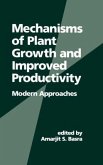There are almost one third of a million species of plants whichrange in form from unicellular algae a few microns in diameter togigantic trees that can grow to a height of 100 meters. Plant Lifemakes sense of the bewildering diversity of plants by treating themnot just as photosynthetic factories, but as living organisms thatare the survivors of millions of years of evolutionary struggle.The book examines plants from an evolutionary perspective to showhow such a wide range of life forms has evolved and continues tothrive.
The book is divided into three main sections. The firstintroductory section sets out the necessary background ofevolutionary and taxonomic theory and introduces a classificationof living plants based on the ways in which they have evolved. Thesecond part investigates how the challenges of life in the waterand on land have led to the evolution of the major taxonomic groupsof the plants, and describes the key adaptations that havecontributed to the success of eachgroup. The final section showshow the contrasting environments of the world s major climaticzones have led to the evolution of such different floras as thoseof tropical rainforests, prairies and deserts. This sectionintroduces a fascinating range of plants with ingenious and oftenbizarre methods of survival and reproduction.
The book is enriched by detailed case studies, points fordiscussion and suggestions for further investigation. In addition,extensive color plates and line drawings bring the world of plantsvividly to life. Clear classification charts and a full glossaryare also useful.
Plant Life is an essential elementary text forundergraduate students and should prove a breath of fresh air forjaded botanists who are accustomed to the traditional taxonomicgrind through the plant kingdom.
New, environmental approach in keeping with modern coursecontent.
Beautifully written in a clear, concise and accessiblestyle.
Extensive colour plates, electron micrographs and line drawingsbring the world of plants vividly to life.
Uses carefully chosen examples of species in each group, sothat students are not overwhelmed with excessive information andspecies lists.
Discussion questions at the end of chapters encourages furtherreading and provides essay topics for teachers.
Clear classification charts and a full glossary provide usefulmaterial for revision.
Hinweis: Dieser Artikel kann nur an eine deutsche Lieferadresse ausgeliefert werden.
The book is divided into three main sections. The firstintroductory section sets out the necessary background ofevolutionary and taxonomic theory and introduces a classificationof living plants based on the ways in which they have evolved. Thesecond part investigates how the challenges of life in the waterand on land have led to the evolution of the major taxonomic groupsof the plants, and describes the key adaptations that havecontributed to the success of eachgroup. The final section showshow the contrasting environments of the world s major climaticzones have led to the evolution of such different floras as thoseof tropical rainforests, prairies and deserts. This sectionintroduces a fascinating range of plants with ingenious and oftenbizarre methods of survival and reproduction.
The book is enriched by detailed case studies, points fordiscussion and suggestions for further investigation. In addition,extensive color plates and line drawings bring the world of plantsvividly to life. Clear classification charts and a full glossaryare also useful.
Plant Life is an essential elementary text forundergraduate students and should prove a breath of fresh air forjaded botanists who are accustomed to the traditional taxonomicgrind through the plant kingdom.
New, environmental approach in keeping with modern coursecontent.
Beautifully written in a clear, concise and accessiblestyle.
Extensive colour plates, electron micrographs and line drawingsbring the world of plants vividly to life.
Uses carefully chosen examples of species in each group, sothat students are not overwhelmed with excessive information andspecies lists.
Discussion questions at the end of chapters encourages furtherreading and provides essay topics for teachers.
Clear classification charts and a full glossary provide usefulmaterial for revision.
Hinweis: Dieser Artikel kann nur an eine deutsche Lieferadresse ausgeliefert werden.
"In recent years, there have been two landmark books extolling thewonders of plant life in a way we can all appreciate: RichardMabey's Flora Britannica and David Attenborough's The Private Lifeof Plants. This is another in the same mould, and it is a must foranyone who takes delight in the world of plants." February 2000,BBC Wildlife Magazine
"This is an enjoyable book for its novel and refreshing approachto plant diversity."
30 November 2001, Michael Black, Times Higher EducationSupplement
"The authors have made an interesting attempt to present theinformation in a fresh and more easily digested manner by departingfrom the traditional approach. The book is introductory and it isunfair to want more; indeed, it should be a mark of its success ifit encourages students to find out more. I am sure that the bookwill find a place as a text in schools and at introductory level inuniversities. I shall be recommending it to my students." MIngrouille, Annals of Botany, May 2002
"This is an enjoyable book for its novel and refreshing approachto plant diversity."
30 November 2001, Michael Black, Times Higher EducationSupplement
"The authors have made an interesting attempt to present theinformation in a fresh and more easily digested manner by departingfrom the traditional approach. The book is introductory and it isunfair to want more; indeed, it should be a mark of its success ifit encourages students to find out more. I am sure that the bookwill find a place as a text in schools and at introductory level inuniversities. I shall be recommending it to my students." MIngrouille, Annals of Botany, May 2002








